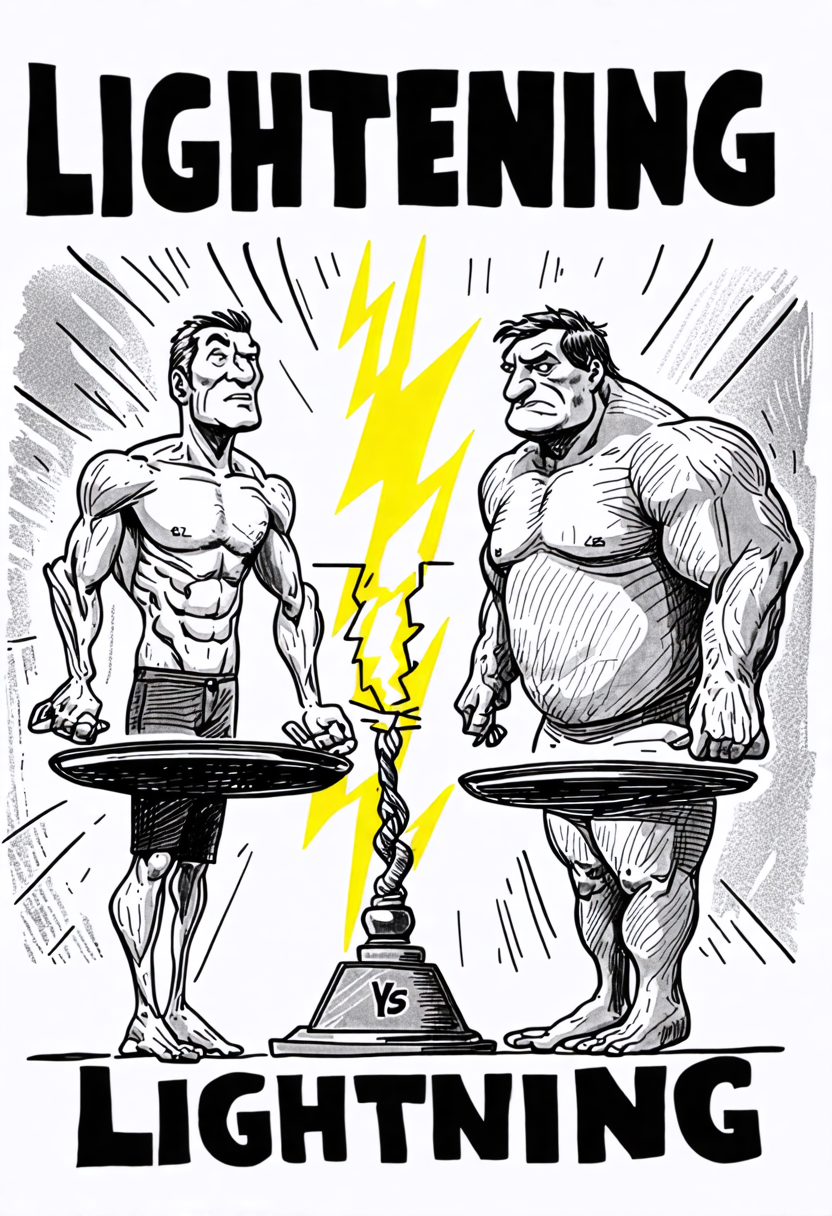Lightening Vs. Lightning
Lightening and lightning are often confused due to their similar spellings. Lightening is the present participle of ‘lighten’ and refers to making something less heavy, brighter, or less intense. For instance, you might lighten a room with bright colors or lighten your mood with humor. Conversely, lightning refers to a powerful electrical discharge during a storm, usually accompanied by thunder. Lightning is a natural phenomenon that can result in fires and injuries.
Understanding Lightening
Understanding lightening involves recognizing its role as the present participle of the verb ‘lighten.’ Lightening can refer to making something less heavy or changing its color. For example, adding mirrors to a room can create a significant effect by brightening the space.
Similarly, rushing to help lift a heavy object lightens the load, making it easier to carry. Another common use is in improving the atmosphere by using humor, which lightens the mood. These examples illustrate the diverse applications of lightening in various contexts.
Lightening in Everyday Life
Lightening frequently plays a significant role in daily activities, from enhancing home decor to easing physical tasks. It involves making things lighter in weight or brighter in appearance. For example, adding lighter colors to a room can create a more inviting space. Similarly, using humor can lighten the mood during stressful situations.
Here are some common applications:
- Home Decor: Adding mirrors or light-colored paint to brighten rooms.
- Physical Tasks: Using tools to reduce the effort needed for lifting.
- Fashion: Choosing lighter fabrics for comfort in warm weather.
- Mental Health: Engaging in activities that lift spirits and reduce stress.
- Weight Reduction: Removing unnecessary items to lighten loads.
Defining Lightning
Lightning is a powerful electrical discharge that occurs during a storm. It results from the buildup of electrical charges within a cloud. When the difference in charge becomes too great, the electricity is released as lightning. This discharge can happen within a cloud, between clouds, or between a cloud and the ground.

The visual phenomenon of lightning is often accompanied by thunder, which is the sound produced by the rapid expansion of air around the discharge. Lightning can be extremely dangerous, causing fires, injuries, and even fatalities. It also produces electromagnetic waves, which can interfere with electronic devices.
Media Portrayals of Lightening
Media often portrays lightening in diverse ways, from beauty enhancements to weight reduction narratives. Lightening products, particularly skin-lightening creams, are frequently featured in beauty magazines and advertisements, often sparking debates about beauty standards and cultural perceptions. These products promise to lighten skin tones, aiming to meet certain societal ideals of beauty.
Additionally, lightening is showcased in weight loss contexts. Fitness media often highlights strategies to ‘lighten’ the body by shedding pounds. This includes tips on dieting, exercise routines, and lifestyle changes.
Another portrayal of lightening in media involves interior design. Home improvement shows and articles suggest ways to lighten up spaces, such as using brighter colors or adding mirrors to create a more open, airy feel.
Media Portrayals of Lightning
While media frequently explores the nuances of lightening, it also vividly captures the dramatic and awe-inspiring nature of lightning. Lightning scenes often appear in films, television, and literature to evoke tension or signify powerful events. Documentaries provide educational insights into the science behind lightning, showcasing its beauty and danger.
News reports highlight the impact of lightning strikes on communities and infrastructure. Additionally, photography and artwork capture lightning’s striking visual impact, making it a compelling subject for artists.
- Films: Create suspense with dramatic lightning scenes.
- Documentaries: Explain the science and phenomena of lightning.
- News Reports: Cover lightning strikes and their consequences.
- Photography: Capture the stunning visuals of lightning.
- Artwork: Use lightning to inspire dramatic and dynamic pieces.
Misconceptions About Lightening
Many people mistakenly believe that lightening and lightning are interchangeable terms. This misconception often leads to confusion in both spoken and written communication. Lightening refers to making something lighter in weight, color, or mood. For example, adding mirrors to a room can lighten its appearance. In contrast, lightning is a sudden electrical discharge during a storm, which can be dangerous. Understanding these differences is essential to avoid errors and misunderstandings.
Here is a table to highlight the emotional impact of this confusion:
| Misconception | Context | Impact |
|---|---|---|
| Lightening | Home decor | Brightens the space |
| Lightning | Weather event | Causes fear |
| Lightening | Personal appearance | Can spark controversy |
| Lightning | Safety concern | Requires precautions |
| Lightening | Emotional state | Improves mood |







